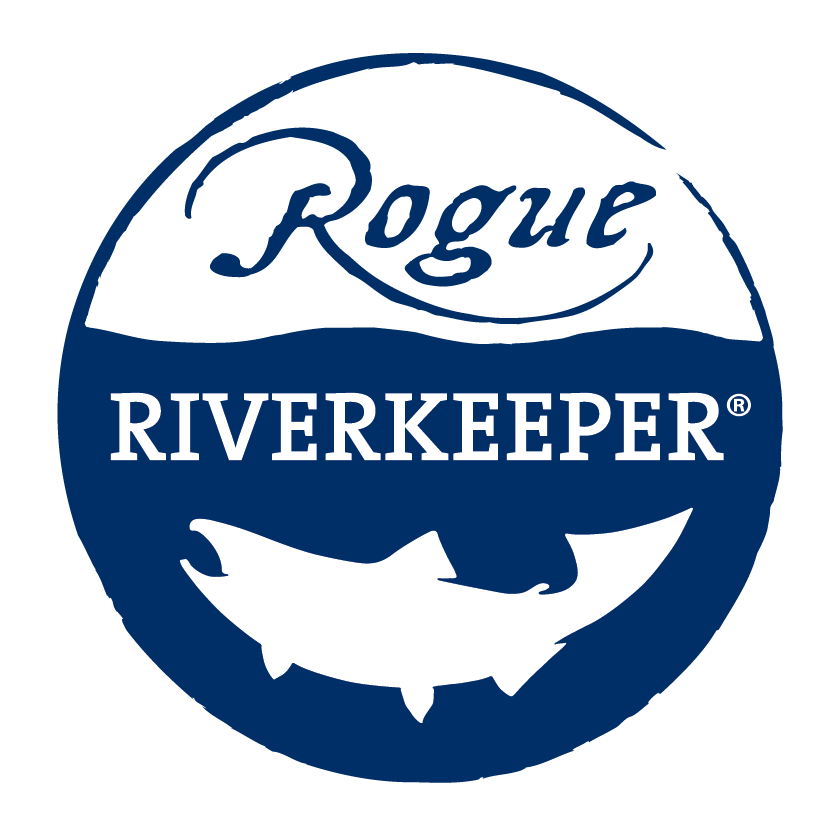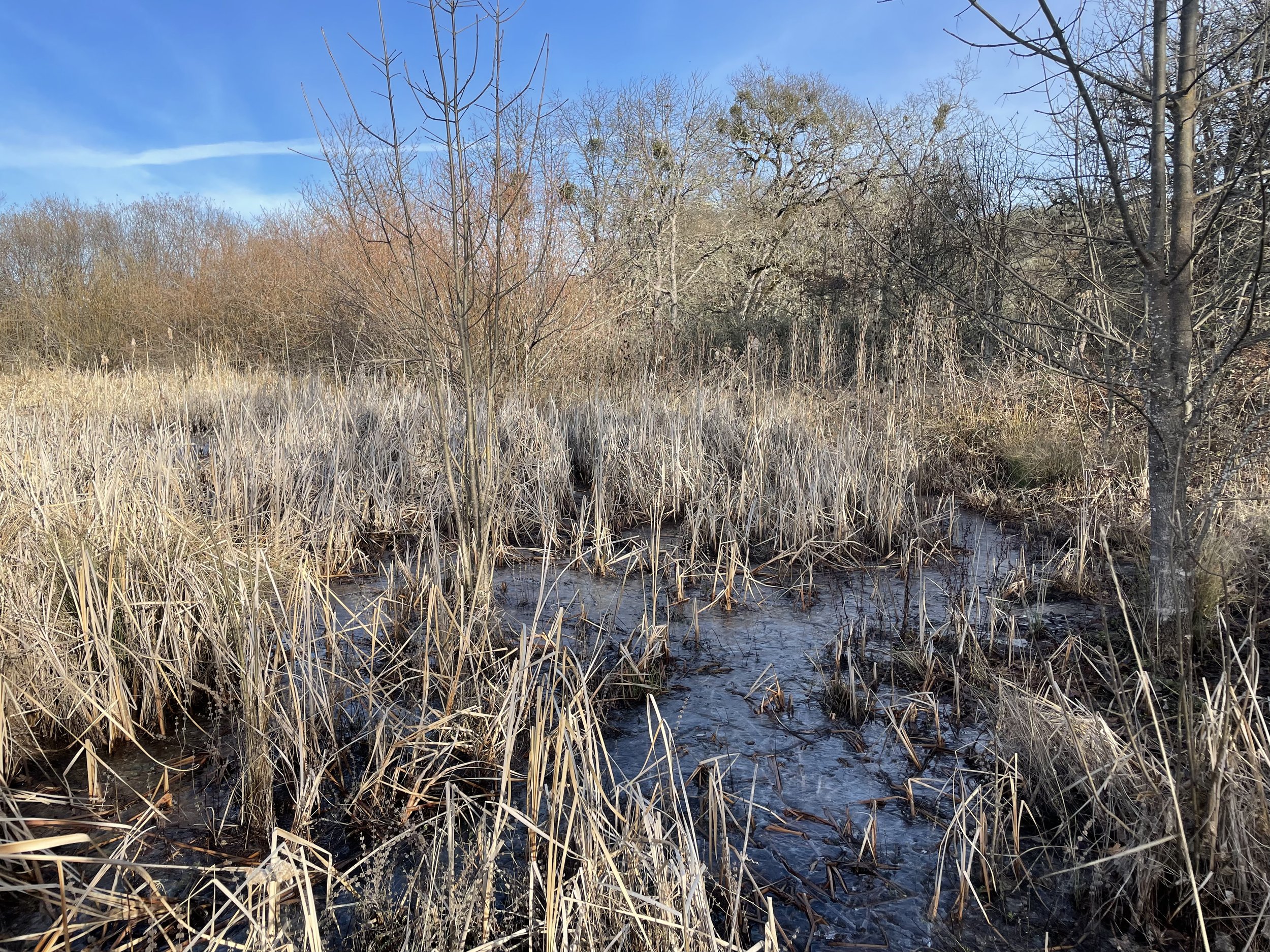Protecting Water Resources: It Starts at the Tributaries
When we think of our local water resources, we most commonly think of rivers and streams, what’s known as “surface water”, which forms a network across the surface of the landscape connecting water in ways we can easily see. But just as important, and some might say more so, are the unseen connections of our water resources, springs, seeps, and the groundwater and wetlands that allow water to move from the locations where it falls to earth as precipitation to those visible streams and rivers. Without the network of water flowing underground, we would not have water in our streams.
A frozen wetland scape in Touvelle State Park along the Rogue River in Central Point, Oregon.
While the underground water is critical, it is less visible making it easy to alter or damage through earth work and development. The State of Oregon recognizes the importance of these water resources in our land use planning as defined in Goal 5 by the Oregon Land Conservation and Development Department. Goal 5 includes protection for fish habitat, riparian corridors, wetlands, and both perennial and intermittent streams but the state gives discretion to local cities and counties to protect these water resources through their own planning processes and development codes. This is where the wheels can fall off before protection takes place.
Each of the counties and cities in our basin have different riparian and wetland protection ordinances; some are more protective than others. If the local jurisdiction does not have or is not willing to adopt protection ordinances, it is difficult to actually prevent damage to these resources. Some jurisdictions have the ordinances on the books but don’t follow through with developers or sometimes even their own departments in following the regulations.
This is where citizen monitoring and involvement in the local planning process is critical. The way to see what is happening in your community is to stay in touch with what is being reviewed and approved on your local Planning Commission’s website. Typically, larger projects such as new development or redevelopment of older buildings are required to go through a period of public notification and comment prior to approval by your local Planning Commission. Concerned residents can use this planning and development process to voice their concerns by making comments during the Planning Commission review. If residents give a voice to protect these smaller and little noticed water resources and push against those who would rather destroy or damage them for their own projects, we have a chance to protect these critical parts of the watershed.

